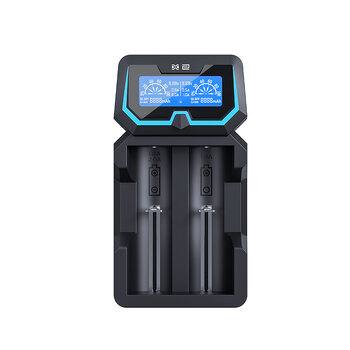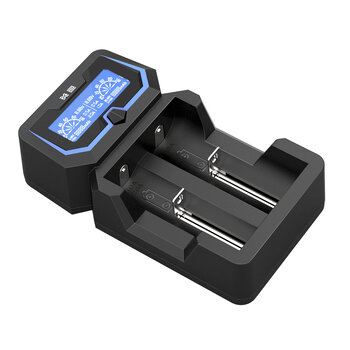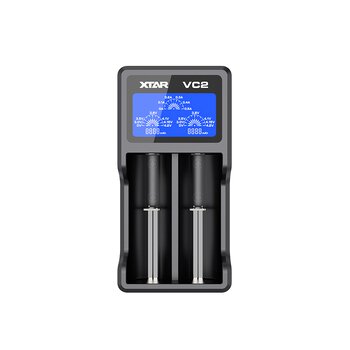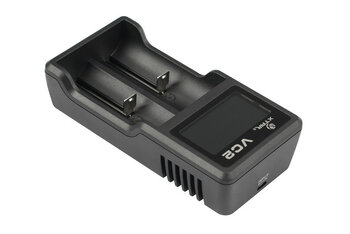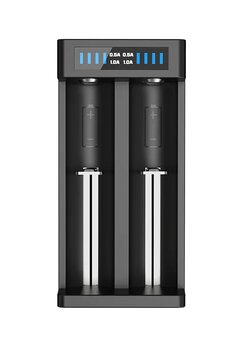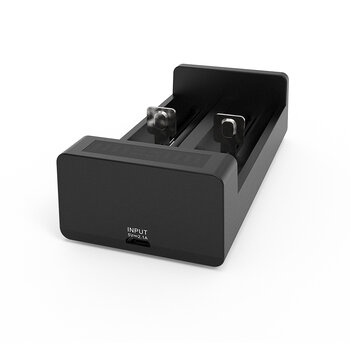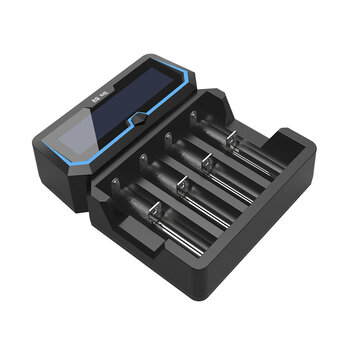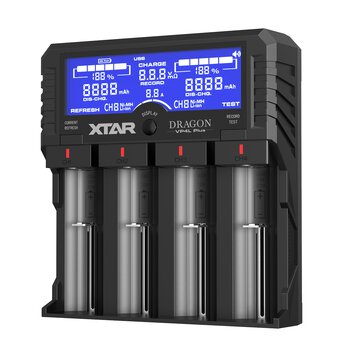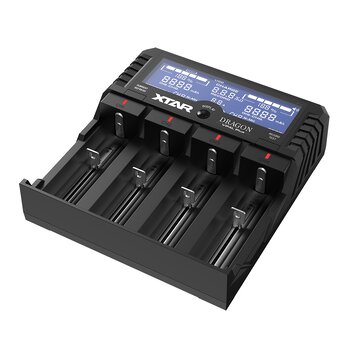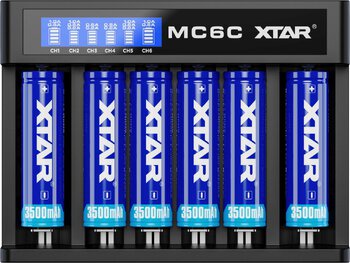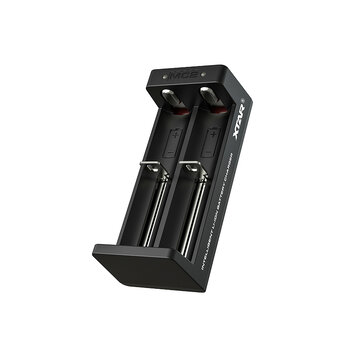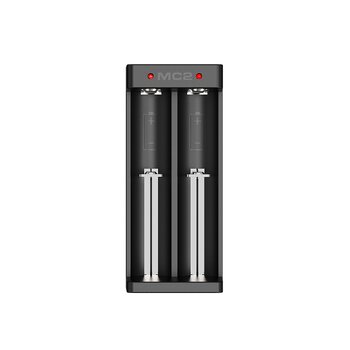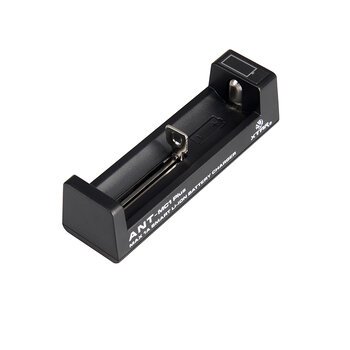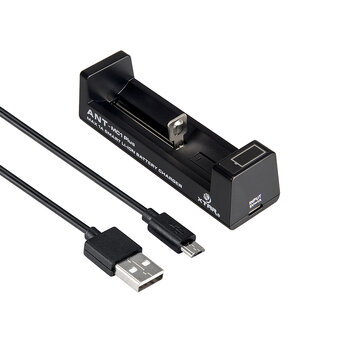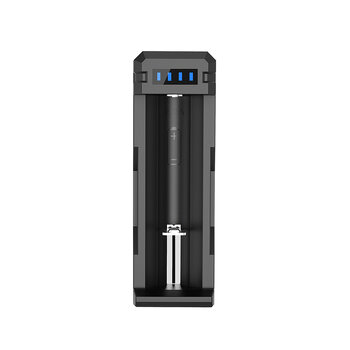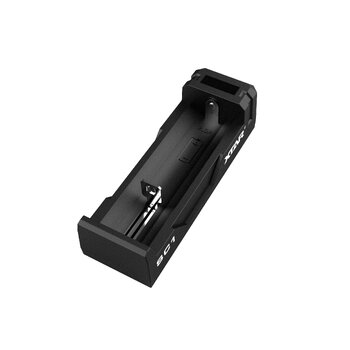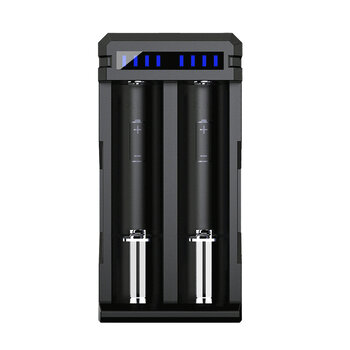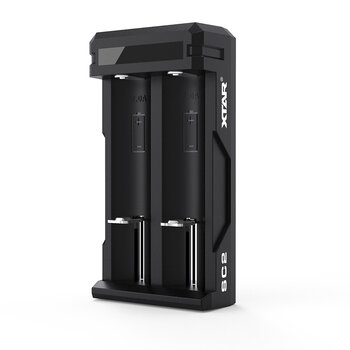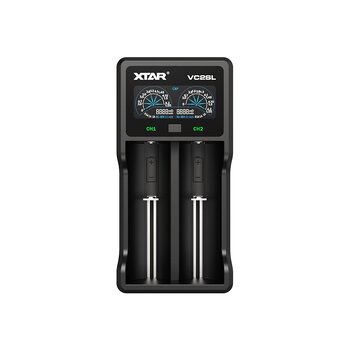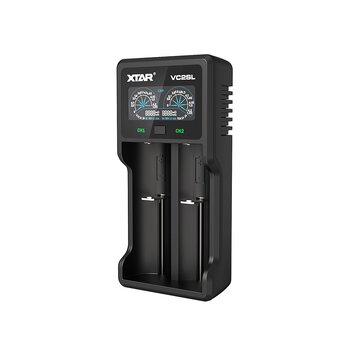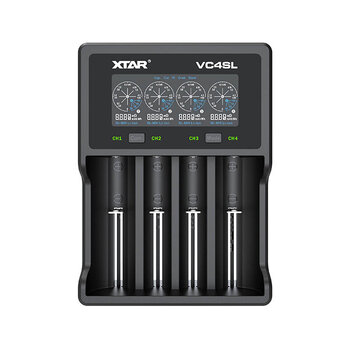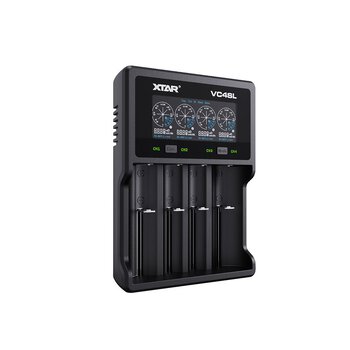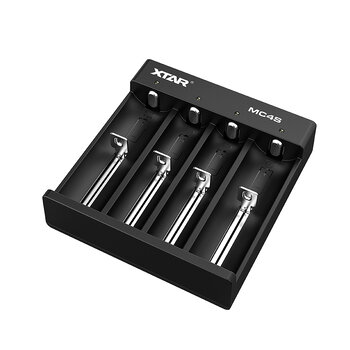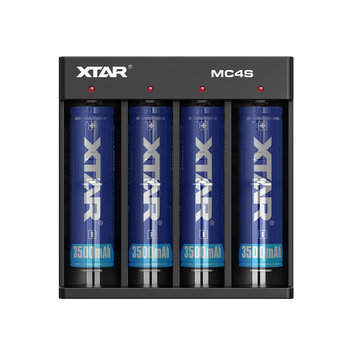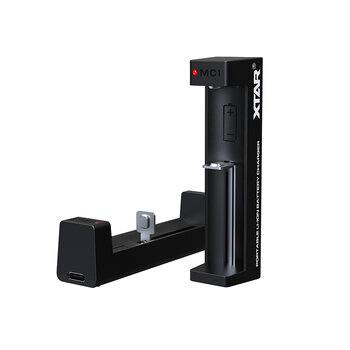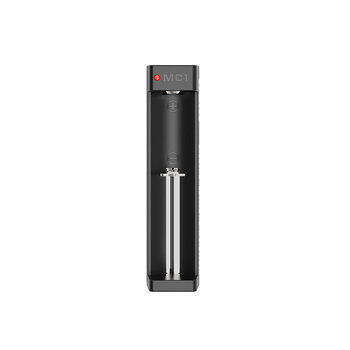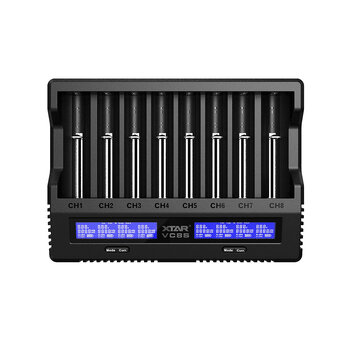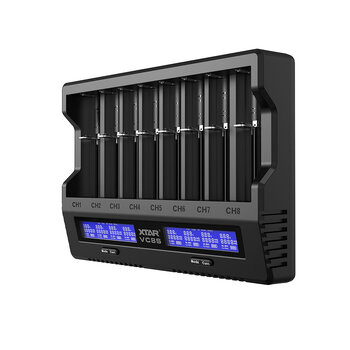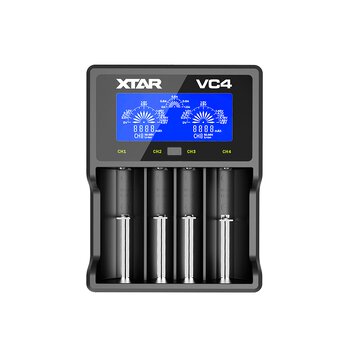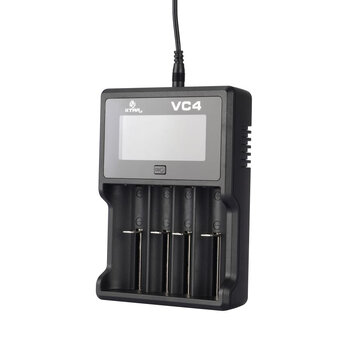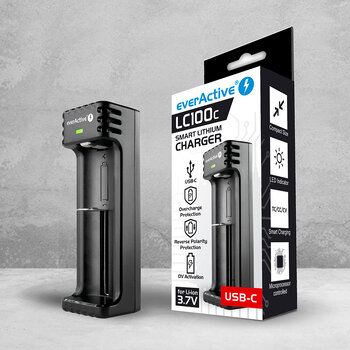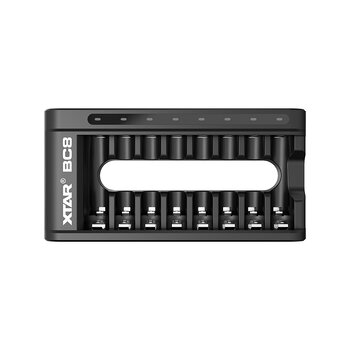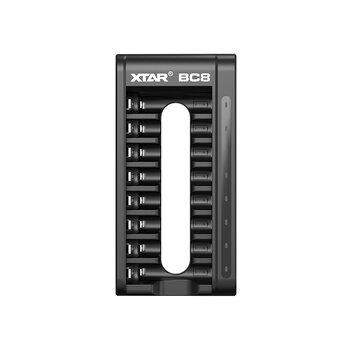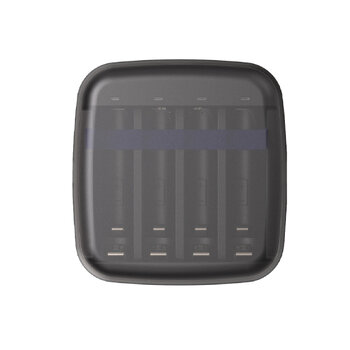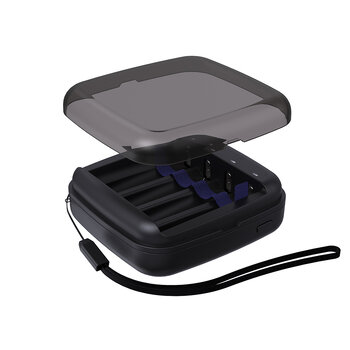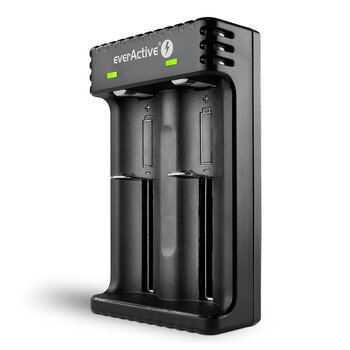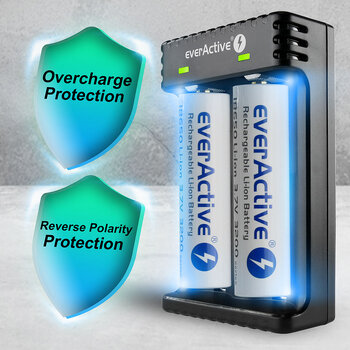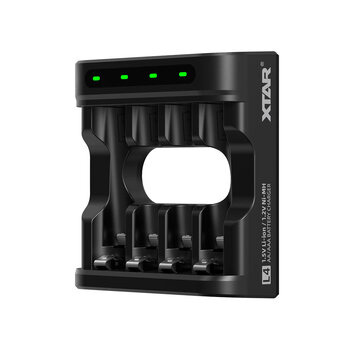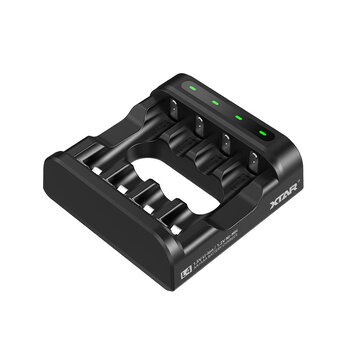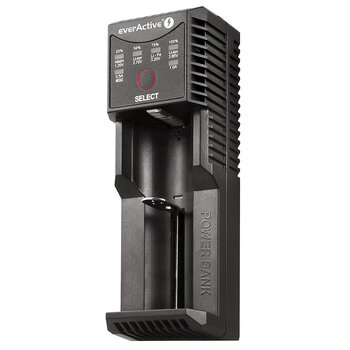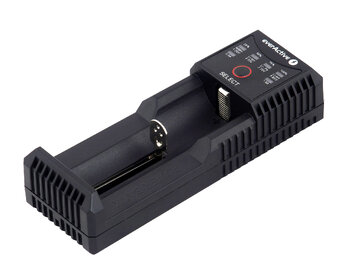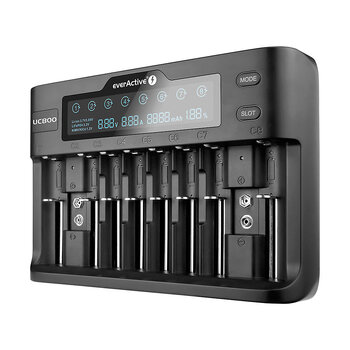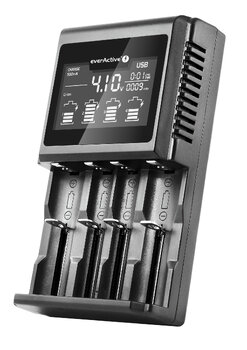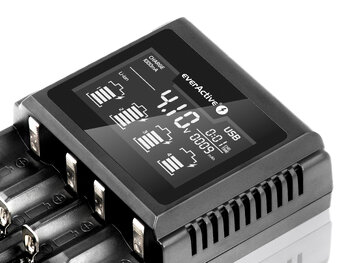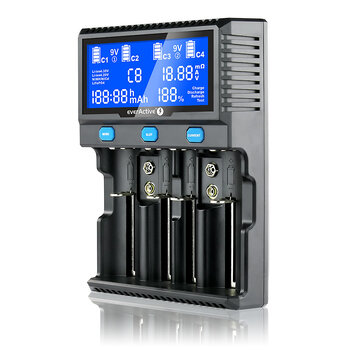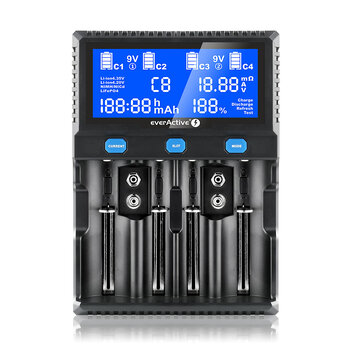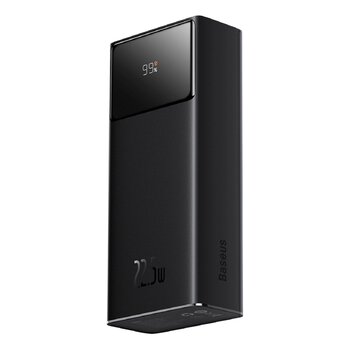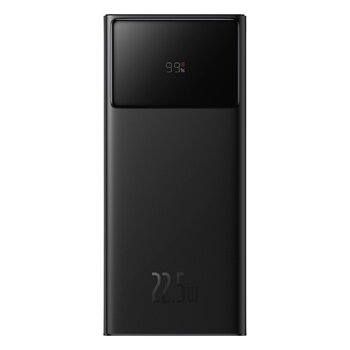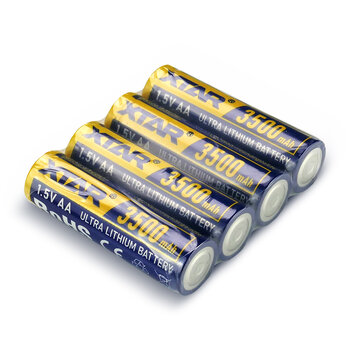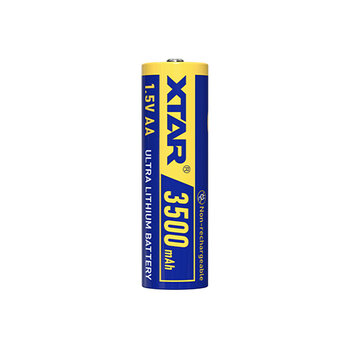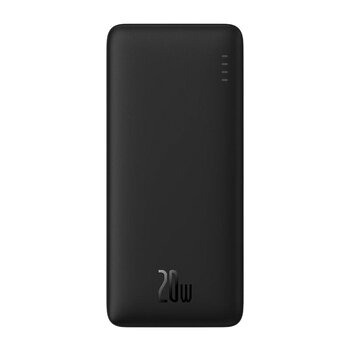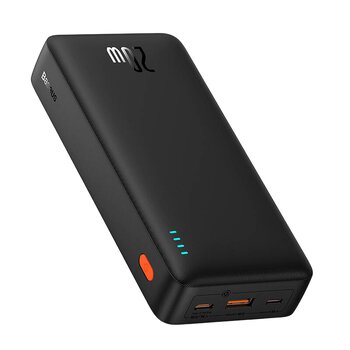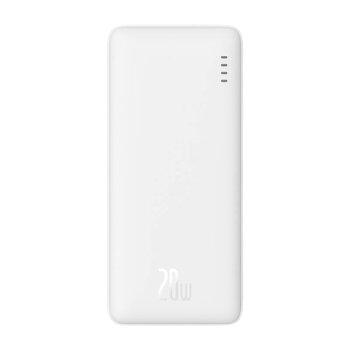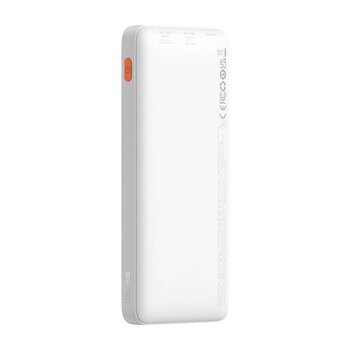Professional, compact processor/Power Bank charger
Xtar PB2S in Black
For Li-ion batteries in sizes 18650/20700/21700/26650

| • Automatically selected charging current 2x 1A/1X 2A • Two USB-TYPA and TYPE-C (IN/OUT) outputs • Two independent charging channels + built-in balancer • Powered by USB TYPE C socket with QC 3.0 and PD 3.0 • Compact size-Easy to carry • Magnetic Charging compartment Cover • Reactivation function of deeply discharged cells • Protection: Short-circuit, thermal, reverse polarity |
In a small enclosure, a fully professional processor charger with Power Bank function is concealed with a three-stage charging process TC/CC/CV. It loads 3.6/3.7 v Li-ion cells with any capacity in size 18650/20700/21700/26650. The intelligent built-in balancer controls the charging and discharge process. It significantly extends the life of the cells. The charger always starts by charging a more discharged cell. After reaching a similar charging level, it starts to charge both batteries simultaneously. The same happens in case of discharge. The charger starts unloading from the more charged cell, when the level of the charge is leveled, it begins to unload both batteries simultaneously (Power Bank function).
What Is THE TC/CC/CV charging method? It is a three-step process of loading Li-ion cells to keep the cell in good condition by charging the right current at each stage and completing the charging process at the right moment.
The various stages of the TC/CC/CV process are:
• TC phase: Cells discharged below 2, 9V are ' awake ' to lower currents.
• CC phase: When 2, 9V is reached, the cell is loaded with a constant current of 2x2A/2x1A/1x2A.
• CV phase: When the cell is already nearly charged, the charger switches to a decreasing current charge until it reaches a voltage of 4, 2V on the cell. After reaching 4, 2V the charging process is complete-the battery is fully charged.
Batteries with a voltage of 4, 1V or higher are treated by the charger as charged. To recharge such a full battery, please insert it into the charger before powering it in. When left in the charger, the charged batteries will be subjected to a natural self-discharge process. Charging will resume when the battery voltage drops below 4, 1V.
The Xtar PB2S Charger has a function of reactivating deeply discharged cells and cells with a Voltage Of 0v. Many chargers on the market are not able to charge such batteries. Here with the help comesManually
Short Circuit
Before the battery is reversed
USB TYPE C-TYPE A Cable,

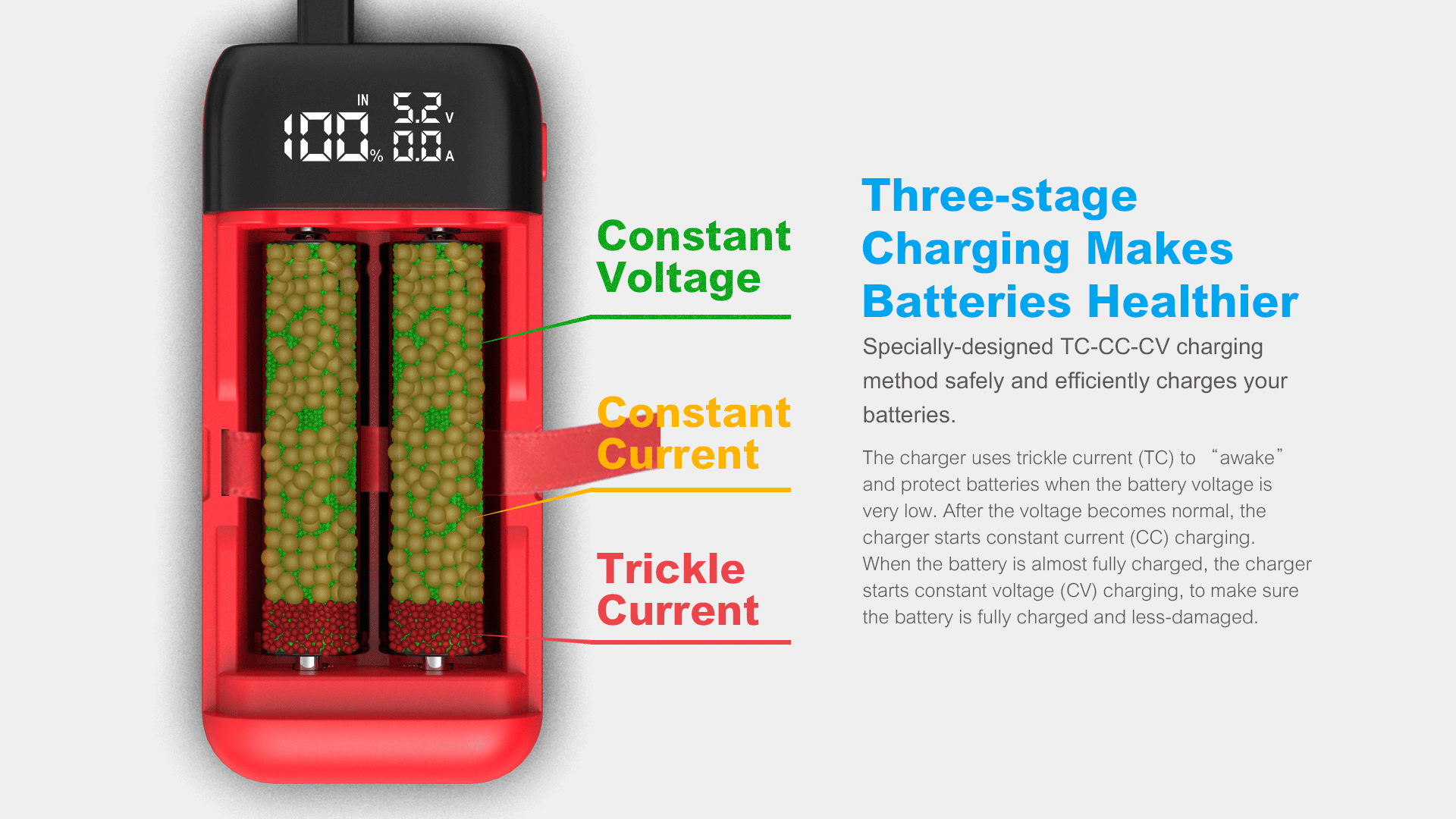
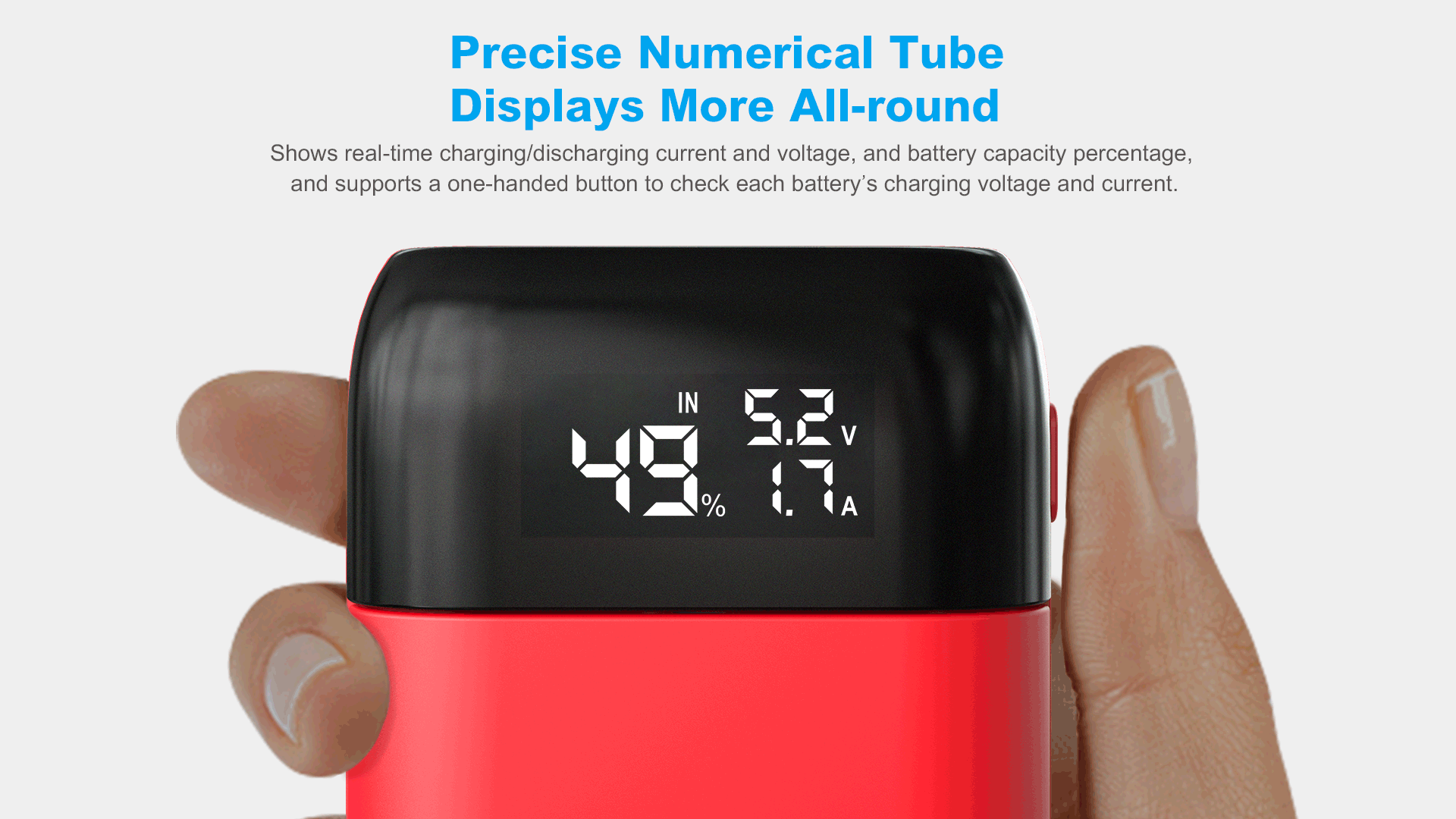
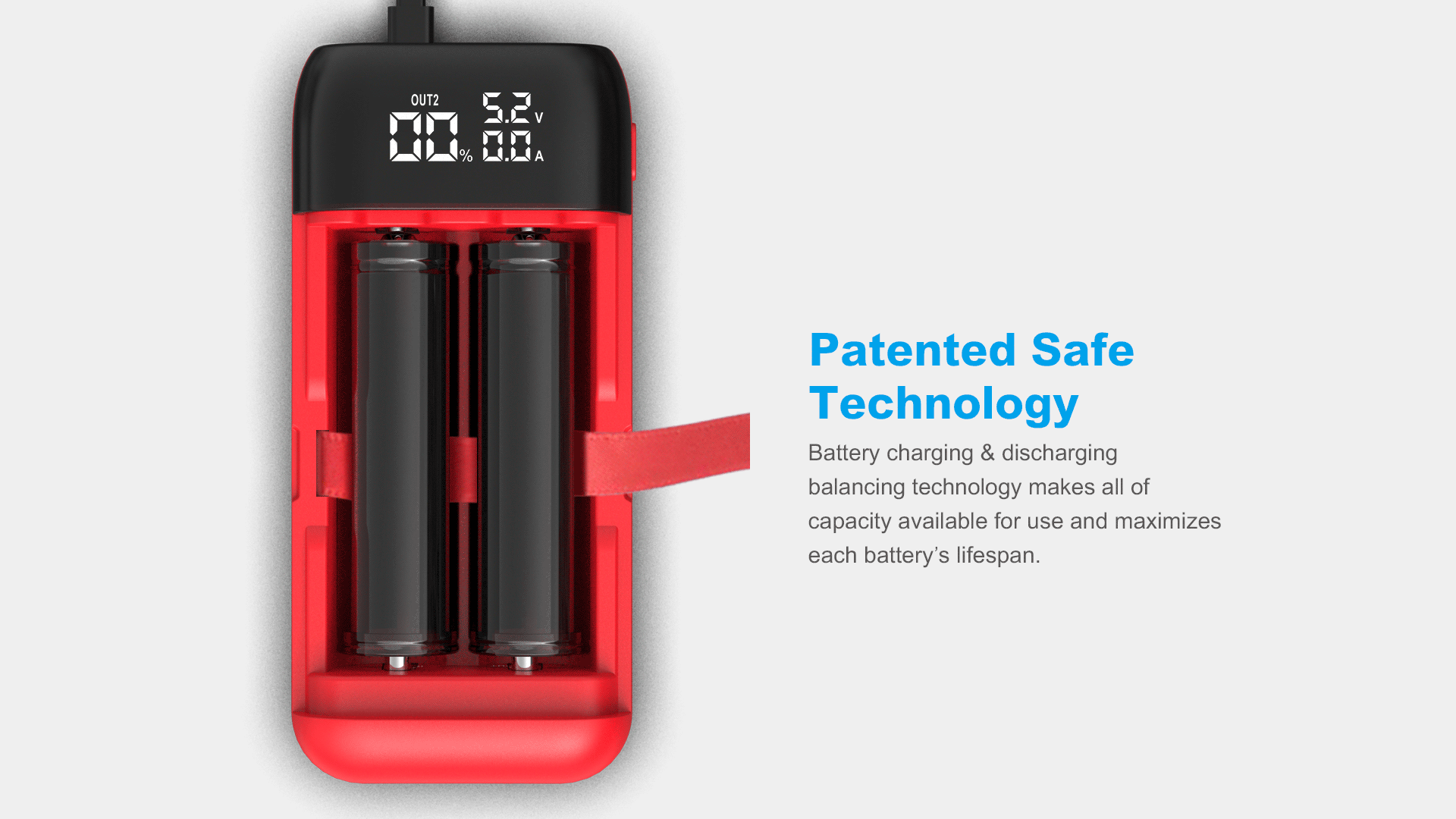
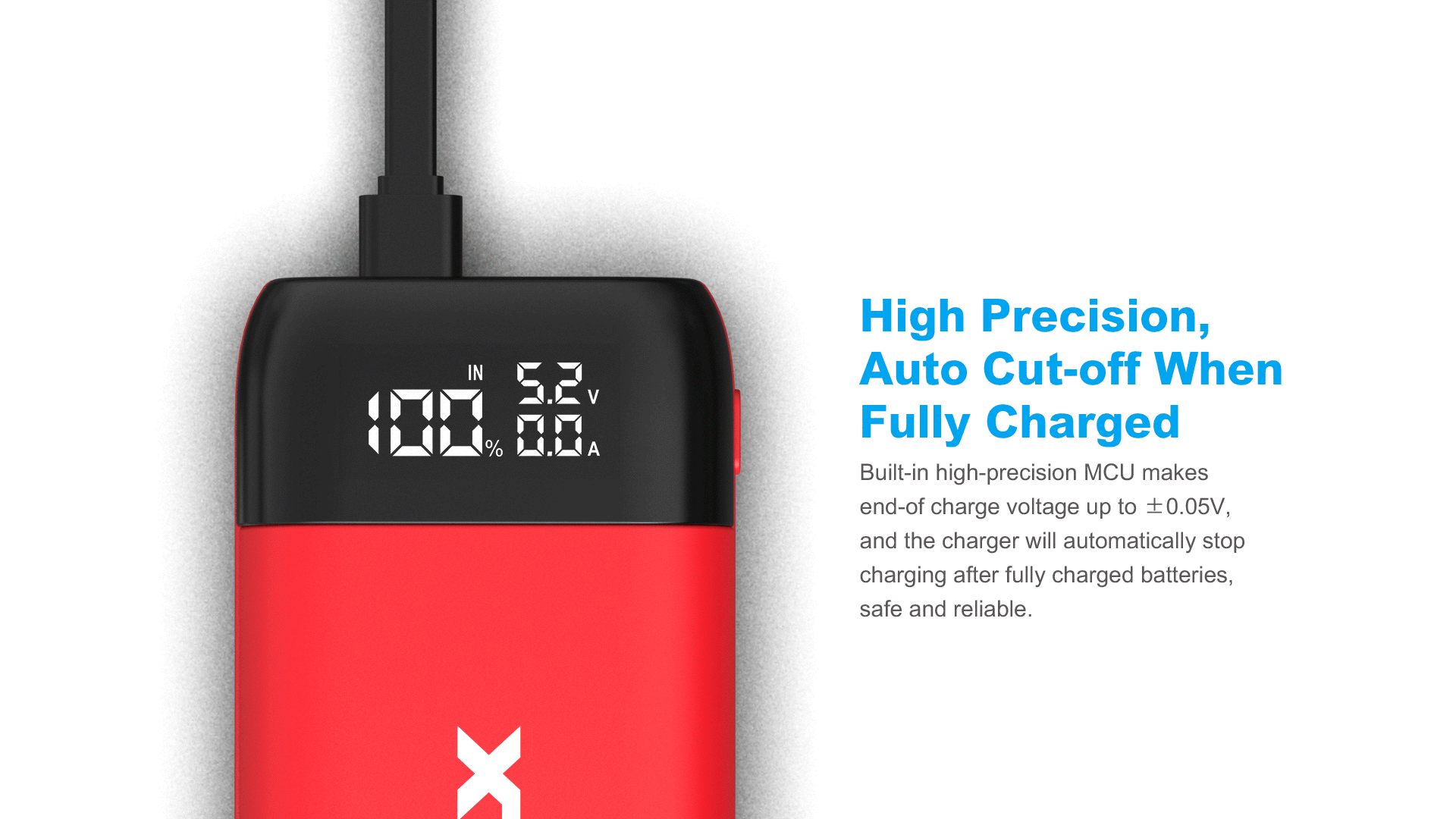
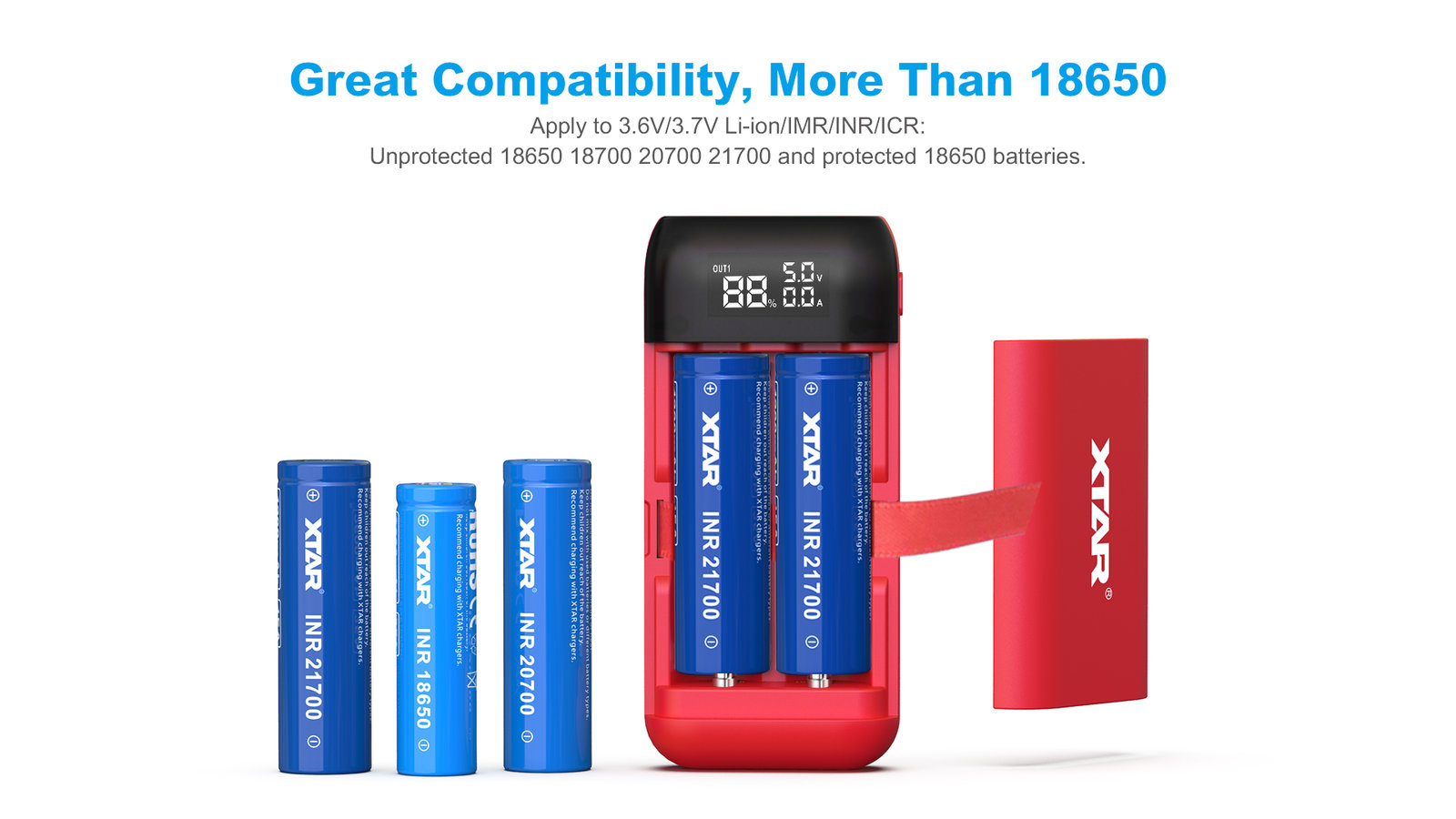
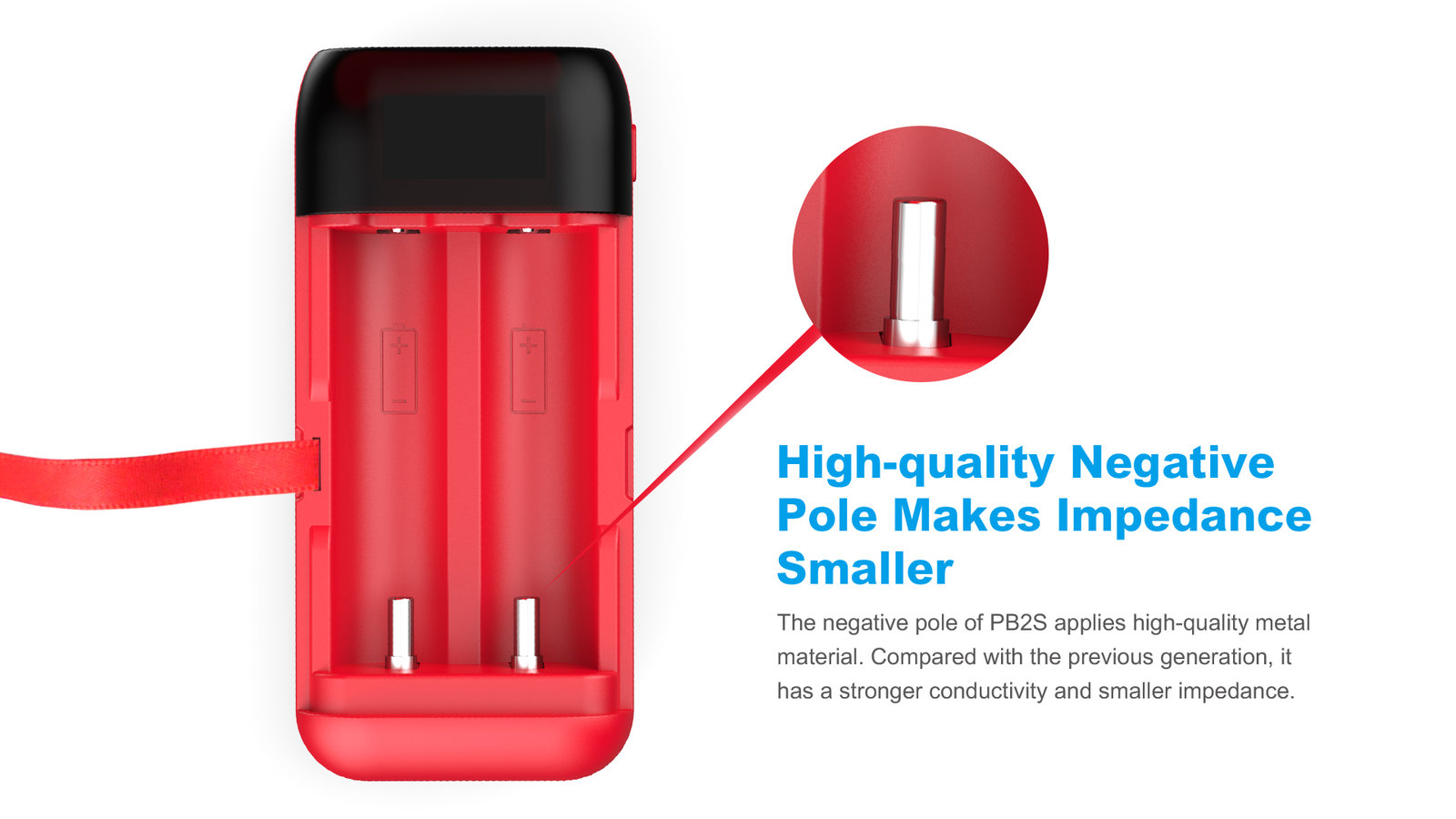
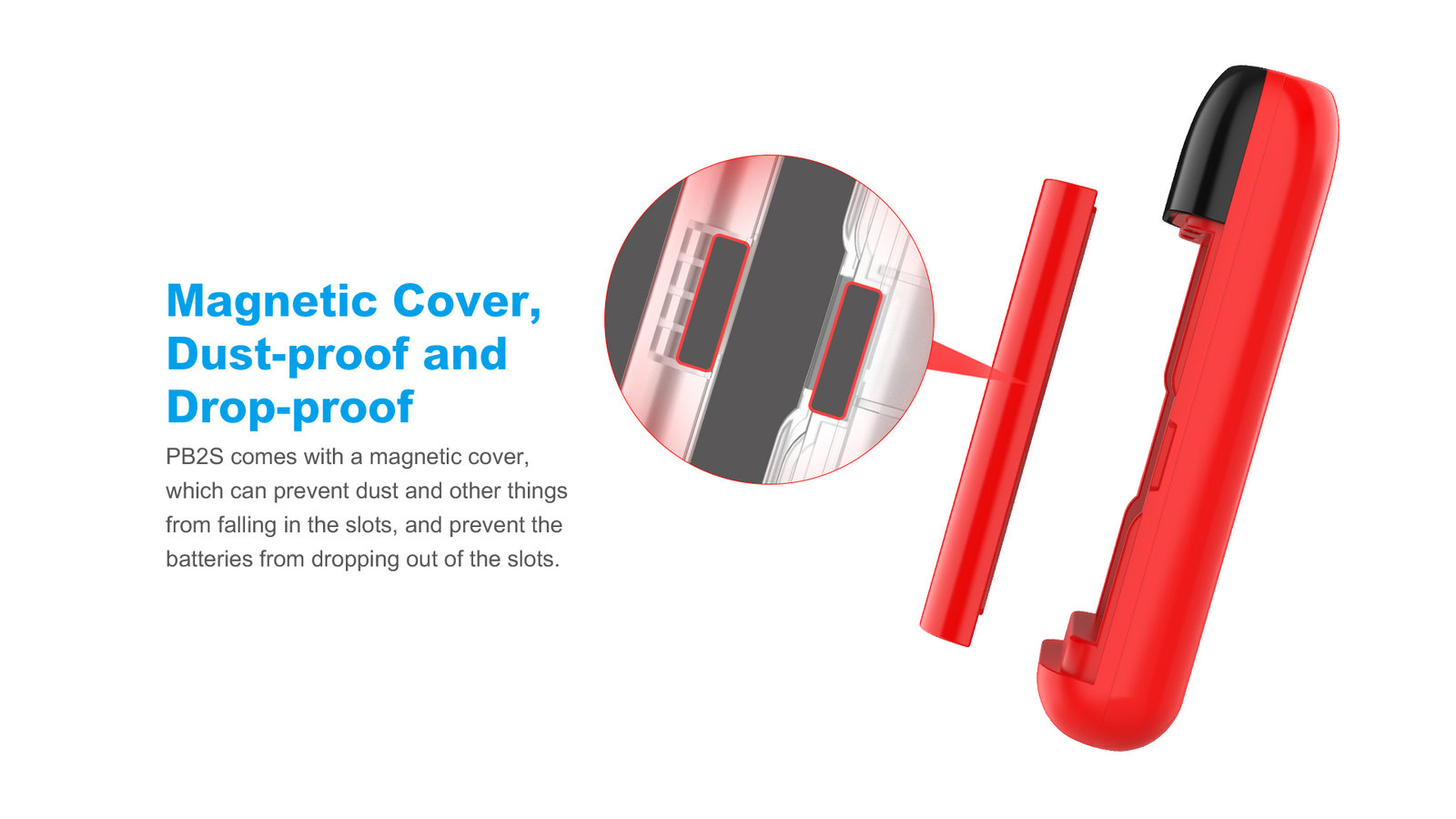
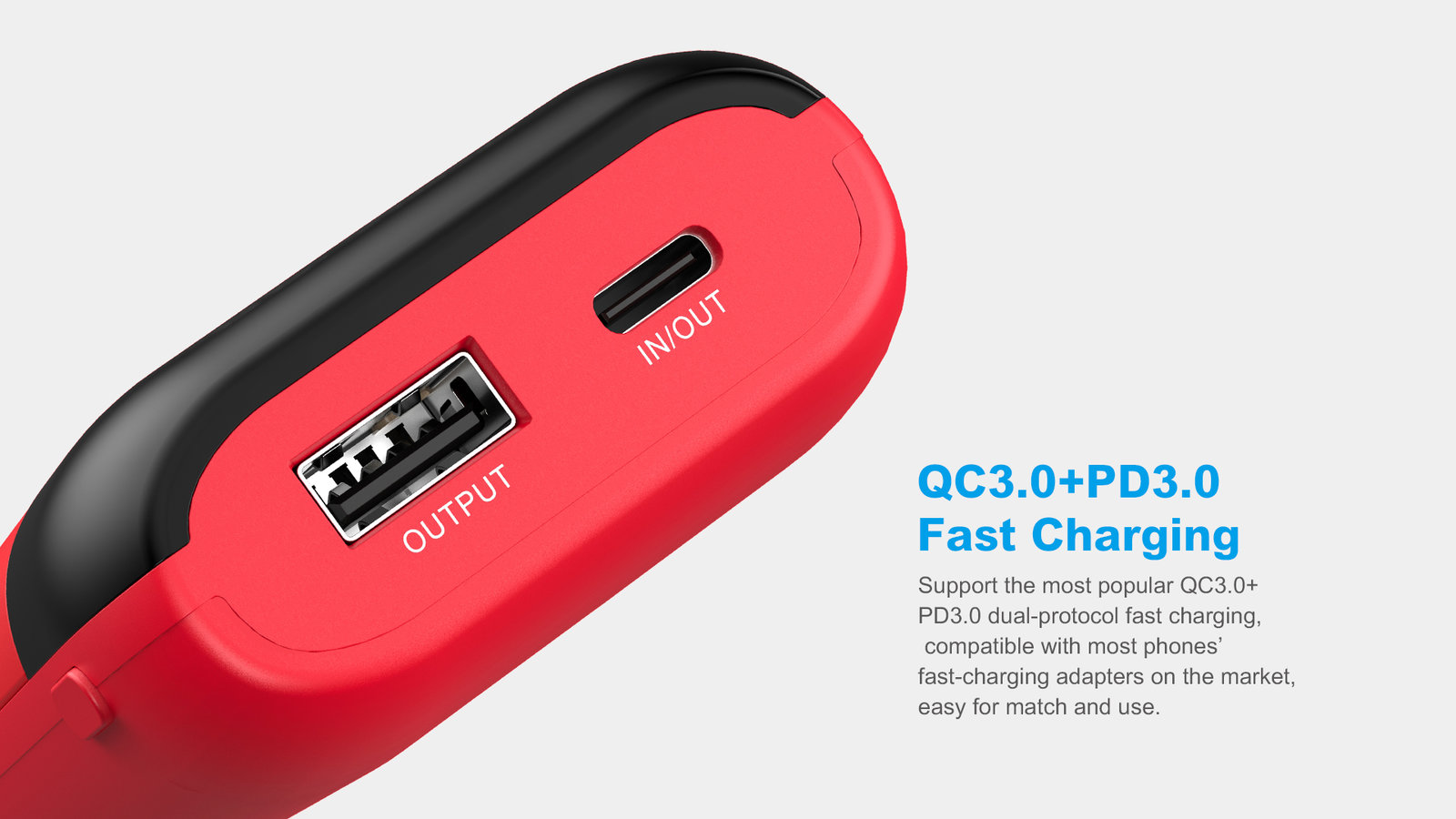
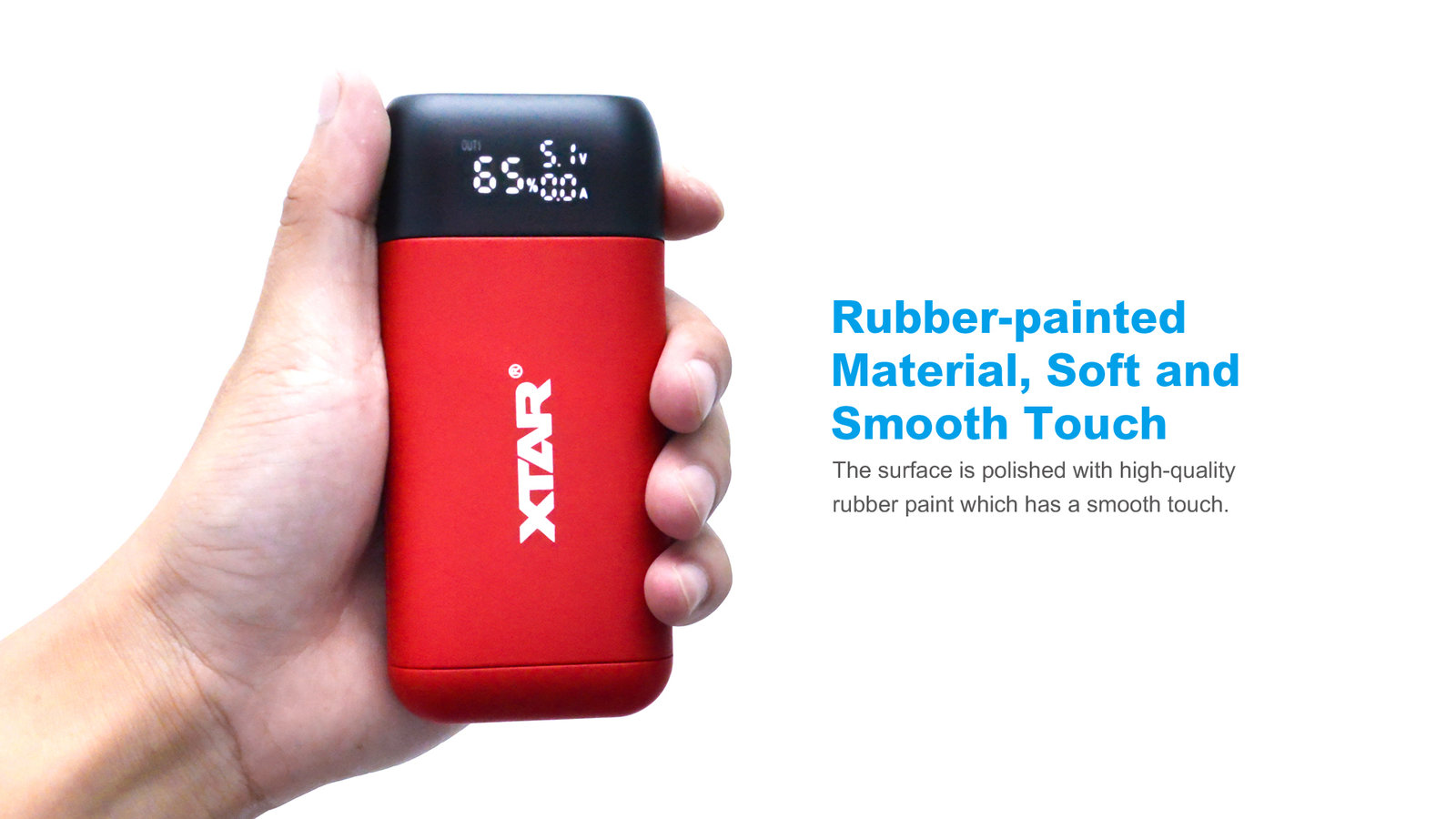
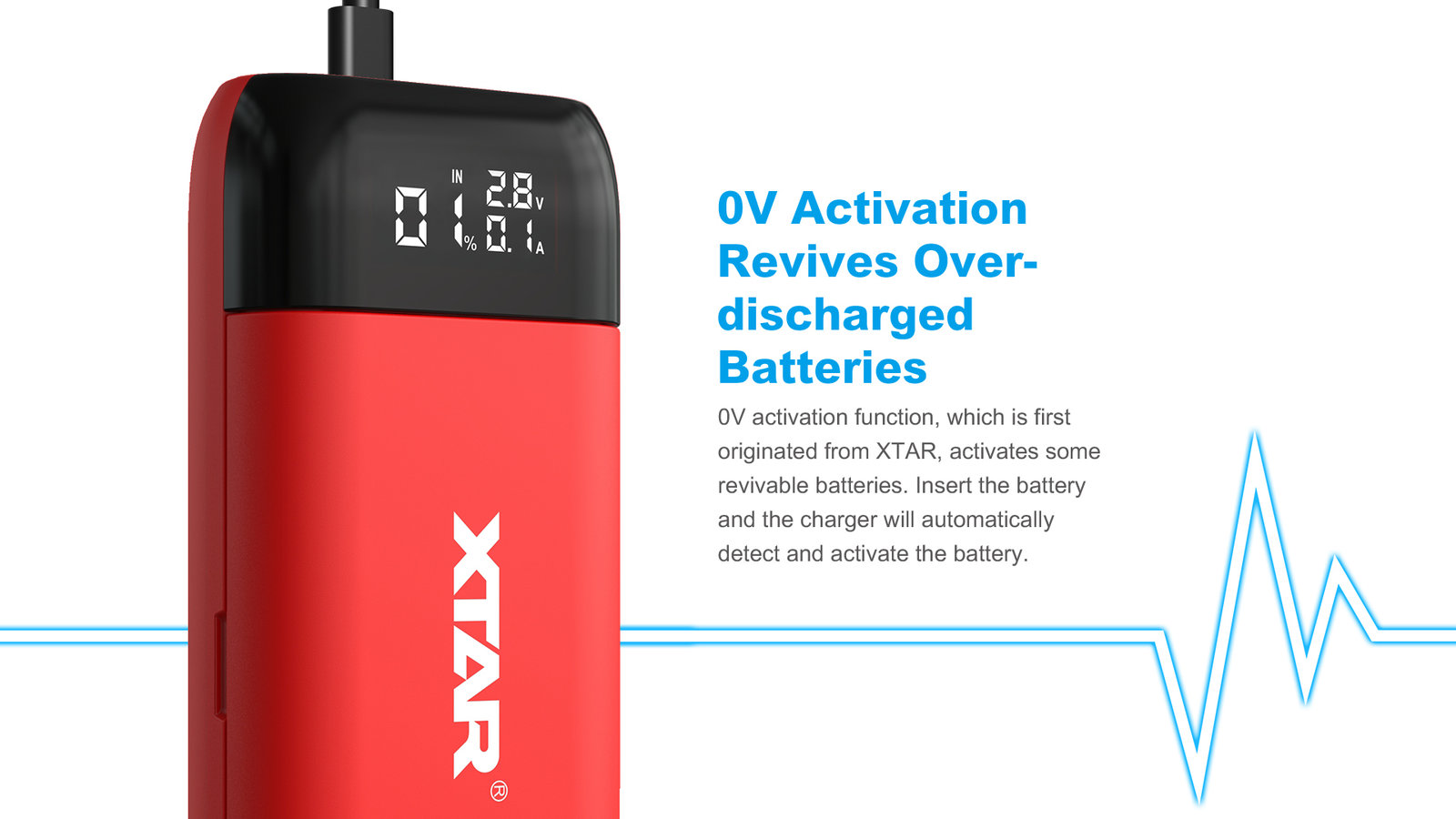
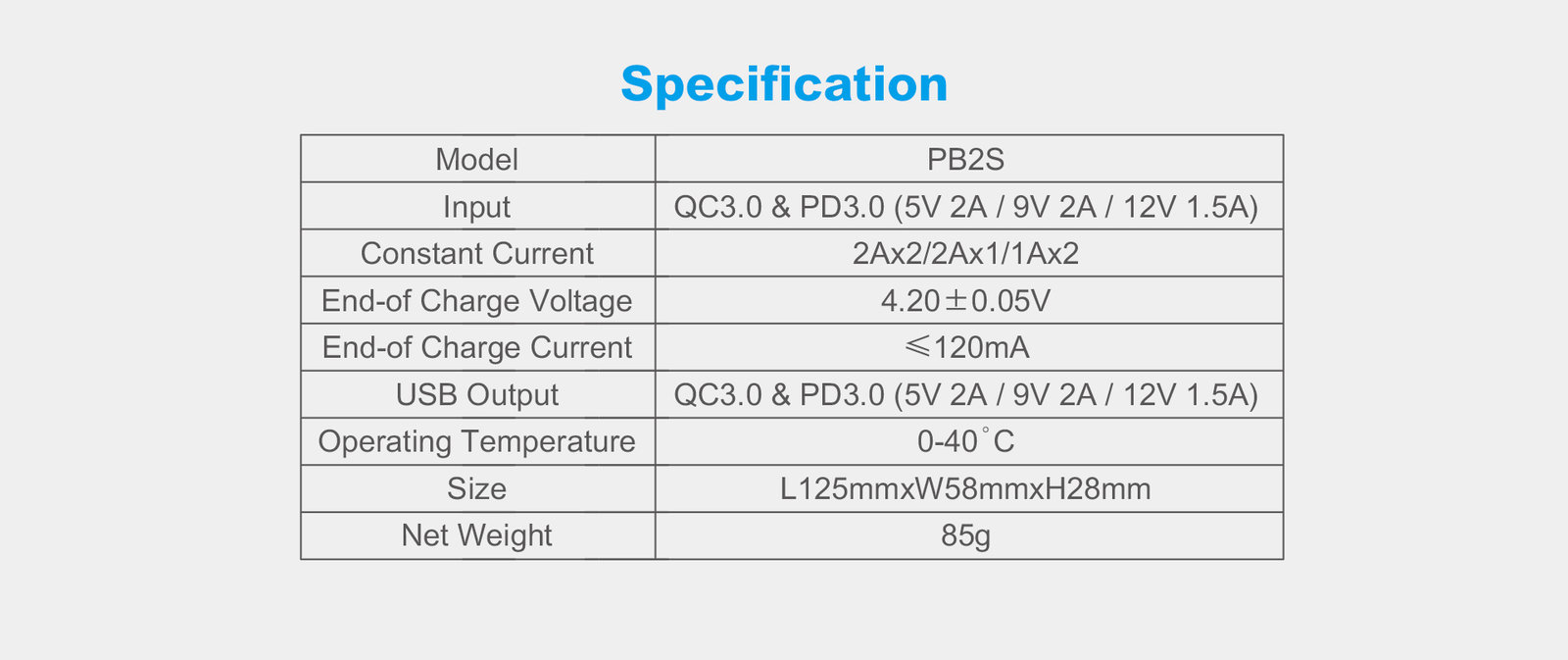

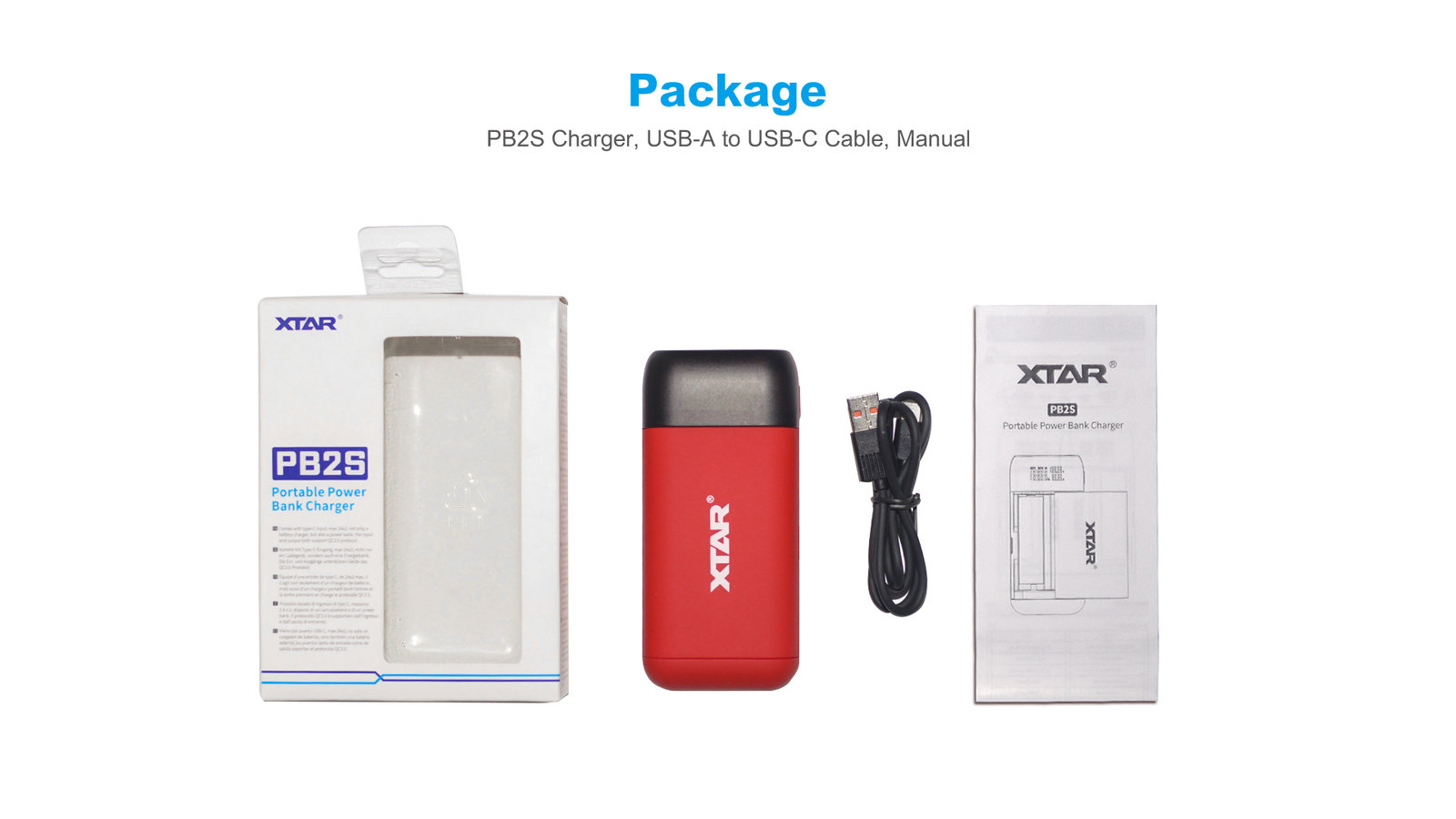
- Li-ion batteries 3.6-3.7V, unprotected
- Li-ion batteries 3.6-3.7V, protected (with PCM/PCB)
- 5V DC(Kabel USB-C w zestawie. Brak zasilacza w zestawie.)
- Processor-controlled TC/CC/CV for Li-ion
- 2x 2A / 2x 1A / 1x 2A
- 4.2V ±0.05V
- Reactivation of deeply discharged cells and 0V cells
- Power bank function
- Before the charger overheats
- Against overload / short circuit
- Before reverse polarity of cells
- Charge
- PB2S charger
- USB Type-C to Type-A Cable
- Li-ion batteries 3.6-3.7V, unprotected
- Li-ion batteries 3.6-3.7V, protected (with PCM/PCB)
- 5V DC(Kabel USB-C w zestawie. Brak zasilacza w zestawie.)
- Processor-controlled TC/CC/CV for Li-ion
- 2x 2A / 2x 1A / 1x 2A
- 4.2V ±0.05V
- Reactivation of deeply discharged cells and 0V cells
- Power bank function
- Before the charger overheats
- Against overload / short circuit
- Before reverse polarity of cells
- Charge
- PB2S charger
- USB Type-C to Type-A Cable
5th Floor, No.77 Xinhe Rd, Shangmugu
518000 Shenzhen
Chiny
Email: info@xtar.cc
Telephone: (+86) 755-25507076
Geodetów 24
80-298 Gdańsk
Polska
Email: contact@baltrade.eu
Telephone: 58 552 20 20


